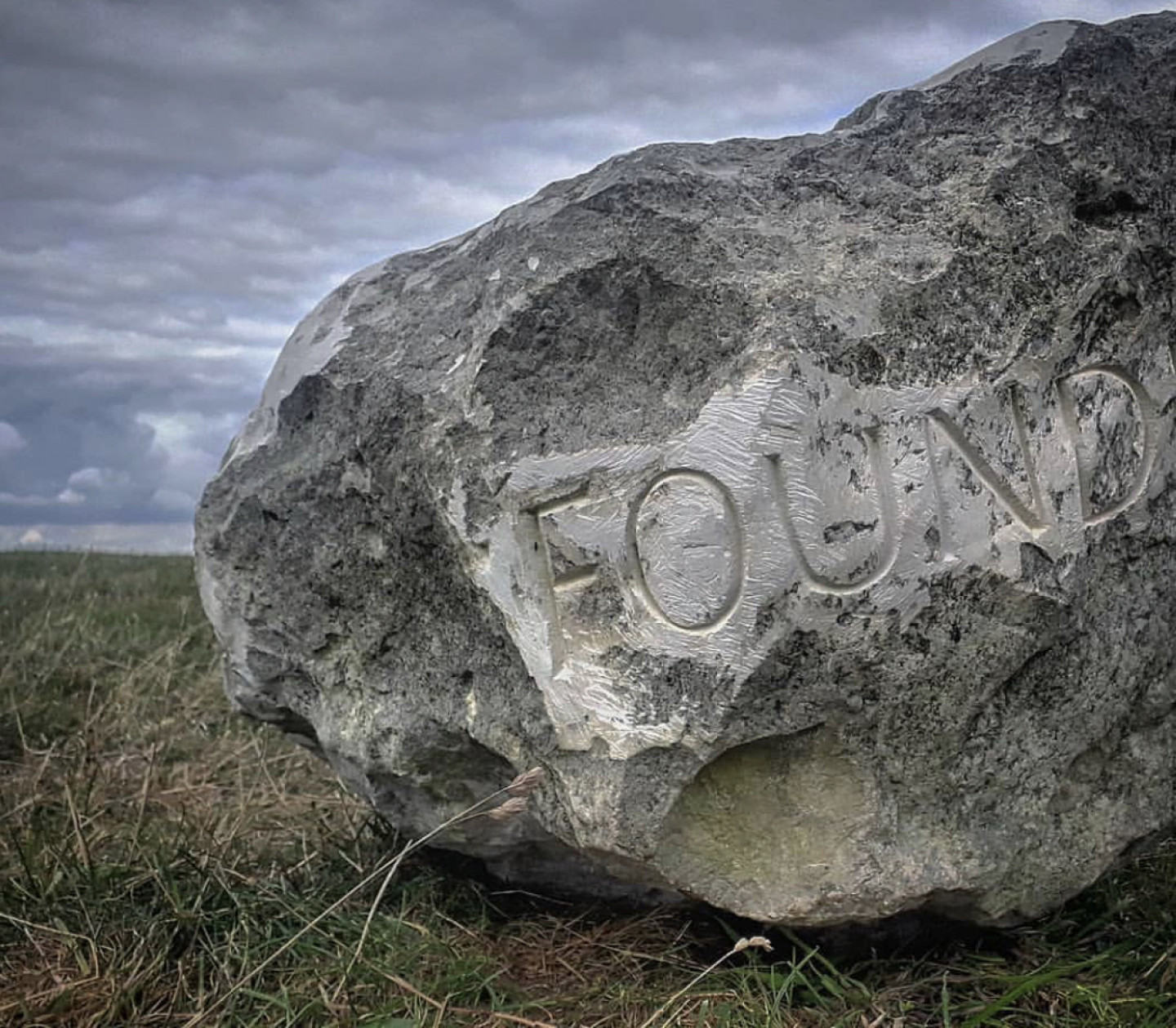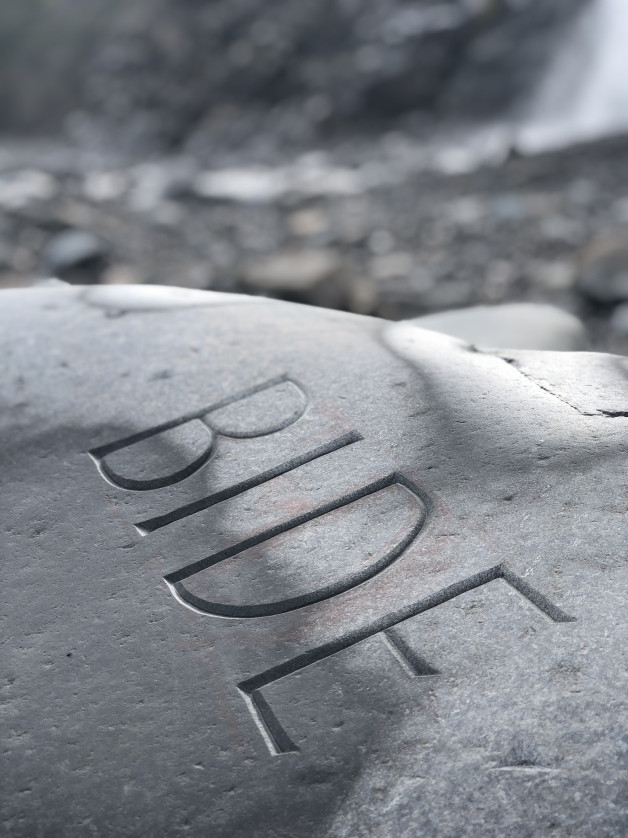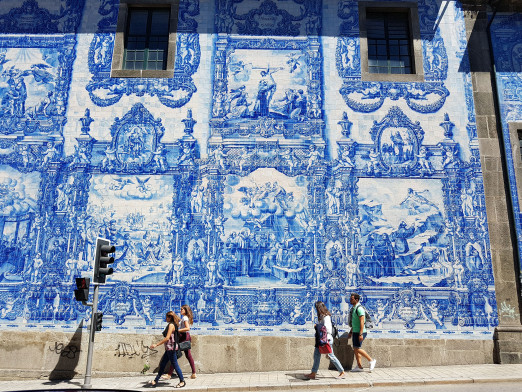It’s relatively unusual to find a woman stone carver, and the man delivering a large piece of stone at Brighton’s American Express Stadium walked straight past her in his quest to find ‘Jo’.
Jo Sweeting is a letter carver and sculptor who works from the scale of hand held to large, monumental forms and boulders. Jo didn’t train as a mason and her Fine Art background liberates her work in stone from the constraints of traditional formal learning.
Re-Wilding the Wordhoard is a collaborative project with the premise of using dialect from around the British Isles as a starting point and inspired primarily by honouring place. The first carved piece was Foundle - anything found on a Sussex hillside - a large chalk boulder discovered high on the South Downs. The next site is the Devonshire shoreline and Jo will work on the beach, carving words gathered from the local dialect into stone boulders.
Jo’s work in letter carving is more popular than ever. In these uncertain times her work speaks of place, of being grounded and a deep connection to the environment. We caught up with her to talk about art, architecture and the human scale.
VN: The starting point of the Building Centre’s recent exhibition The New Stone Age was Clerkenwell Close by Groupwork, where the structural stone of the building is left undressed to reveal the ammonite shells, quartz pockets and seams. This approach seems to resonate with the word ‘Shul’ you use to describe your work. Can you tell us more?
JS: Shul is an ancient Tibetan word that describes forms left as the thing that has made them passes by; a dry river-bed or the imprint of a fox’s shape in grass. Also memory held in a material or body. My practice is about paying attention to small things. Noticing change. By having one fixed thing or ‘touch-stone’ in place it is possible to see everything else in flux. Attendance to an object or mark in place, allows us to notice change over a period of time. For the past 25 years I have never left this Island and rarely travelled more than a few hundred miles from home. Often I call myself ‘Three Mile-Radius Girl’. Our environment has never been more important than now. We have become still, grounded and aware of how much the environment matters. Hopefully if we can name and notice the landscape, we may care for it.
VN: Why is scale important in your work?
JS: Scale is important, and always has been to the sculptor but always relates back to us inside our human forms. We respond very passionately to what we can touch and be held in the hand. There is sometimes a need to make large scale work but for me I am most moved by work that remains intimate.
The best architecture, in my opinion not only honours material but has a human scale which is important for understanding; too big and something becomes unrelatable. The Maggie’s Centres take the person as a guiding principle and recognises the vulnerability of the humans who flow through them in difficult circumstances.
VN: You work in British limestone, can you tell us why you are drawn to this material?
JS: The limestone as material has a connection to place, this place. It is suited to our light and landscape. It is literally the ground we walk on. The honesty of the material is decided upon and takes you back to place; that’s the link. There’s incredible stone in the UK. We are very lucky, although much of the resource has been pillaged and misused. Working large scale in stone is challenging and moving stone can be difficult. It is strong in compression but breaks like glass or china if handled badly.
VN: You say that you like to carve directly into the faces of the stone without certainty. Can you describe this process?
JS: I don’t put the piece on paper or make a maquette as the process of making a scaled-up copy would destroy the energy of the work. I often write and think for months before beginning work. Then I sketch very loosely and quickly on the stones faces. I have a clear idea in my head of how the piece will look but I don’t want to close down the opportunities that arise as you work through the layers and into the stones deeper levels. To honour the material I keep the block as a block usually without rounding the edges. With the ‘Shul’ heads I find the stone and then the words and then the process above begins!
One day I hope to have a single-story dwelling made with flint walls, brick floors, timber framed with open views to the landscape. There will be open fires, a studio and a swimming pool. It is my dream to build a house one day. For me the most exciting architecture is organic and one where the exterior seems not directly connected to the interior.






